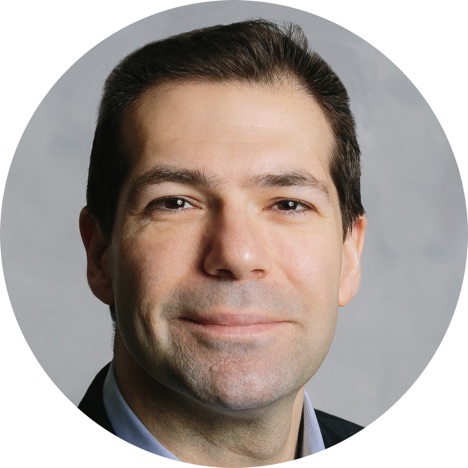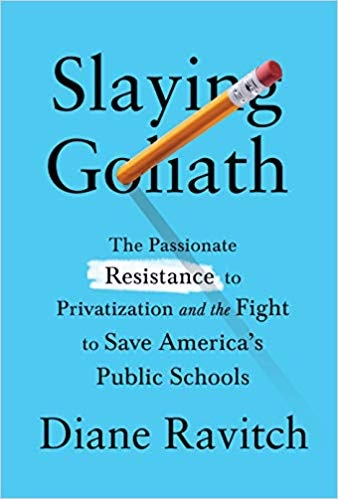Slaying Goliath: The Passionate Resistance to Privatization and the Fight to Save America’s Public Schools by Diane Ravitch tells the story of how wealthy people like Bill Gates and the Koch brothers aided by politicians and the media have disrupted public schools in an effort to privatize K-12 education. She does an excellent job of showing how their efforts have been seriously misguided and how they have damaged public schools, teachers, and students. She also shows how the underfunded opposition has had a number of victories in their efforts to fight back. If you want ammunition for the fight against charter schools, vouchers, and standardized tests, look no further.
1. Disruption Is Not Reform!
- In this book Diane documents the failures of what she calls “Corporate Disruption.” This refers to the reforms backed by conservative and liberal wealthy people and adopted by conservative and liberal politicians. At the heart of the programs are high-stakes standardized tests that have been used to evaluate schools and teachers. They have served to demoralize students and teachers, and have resulted in teacher shortages as many teachers leave and fewer desire to enter the profession.
- Ravitch and many others are convinced that the real problems are poverty and racial segregation rather than failing schools and teachers. Teacher autonomy and creativity have been reduced as they spend abundant time engaging in test preparation. Since the tests only deal with ELA and math, other subjects including recess have been reduced in many schools.
2. The Odious Status Quo
- It seems that a lot of wealthy people want to reinvent education in spite of their lack of expertise. As such they use their philanthropy to control others under the guise of helping. That’s how we get things like kids too young to read in front of computer screens. Meanwhile, things like the cultivation of character are often ignored. When one looks at the data one can see that the crisis in education was a manufactured one. Here Diane summarizes the history of the reform movement. This includes NCLB with it’s patently absurd goal of having all students be proficient.
- The NCLB reform brought the fear of punishment, failure, and losing one’s job into our nation’s classrooms. The so-called remedies had no prior evidence of success. The law was insanely punitive and without a global president. Schools cut back on civics, science, the arts, PE, and recess. Obama’s Race to the Top basically bribed states to adopt the untested Common Core, add more charter schools, and use test scores to evaluate teachers. This was essentially an unconstitutional take over by the federal government. Unfortunately, this mess was also bipartisan.
3. What Do the Disrupters Want?
- They like mayoral control of schools as there is only one person to manipulate. They don’t like teachers’ pensions, which encourage longevity. They like to demonize public schools as failing. They admire disruptive innovations because that is what happens in business. Why would you want to disrupt the lives of our children? They like machine teaching, which they call blended or personalized learning. What they don’t want is any disruption of their private clubs or the exclusive schools that their kids attend.
- Who are they? They are governmental officials like the Secretary of Education regardless of the party. Governors are also included. They are philanthropists with their foundations like Bill Gates, the Walton family, Michael Bloomberg, and the Koch brothers among others. They are hedge fund managers who believe in competition and the free market. They like start-ups (i.e. charter schools) and they don’t like government regulations. There are organizations that sound like they should pro-student, but are largely funded by rich folks. Journalists are also part of the problem as they often carry water for this crowd. (e.g. editorial writers for The New York Times and The Washington Post.)
4. Meet the Resistance
- Resisters have some genuine connection to education such as teachers, administrators, students, and their families. They believe that public schools are a foundation stone or a democratic society. They oppose the privatization of public schools and the misuse of standardized tests. They respect teachers and want public schools to have the resources they need. They want to cultivate a joy of learning. They understand that students’ lives are heavily impacted by conditions they face outside of school. The few foundations that support the resistance are lead by the Schott Foundation for Public Education.
- They are winning because everything the Disruptors have imposed has failed. They are highly motivated and not powered by money. They understand that competition produces few winners and many losers. They are supported by a number of prominent scholars who are listed along with their works. Many resisters like myself have blogs that constantly fight back.












